Are you tired of relying on the professionals for every home improvement project? Well, get ready to take matters into your own hands and achieve professional results right from the comfort of your own toolbox! This blog post will show you the secrets to cutting a 2×4 like a pro with just a circular saw. That’s right, no need to hire expensive contractors or spend hours struggling with manual saws. With these easy-to-follow tips and tricks, you’ll be tackling DIY projects like a seasoned pro in no time. So, grab your safety goggles, grab your circular saw, and let’s get sawing! You won’t believe how simple it is to achieve clean, precise cuts with this versatile power tool.
Benefits of a Circular Saw
Circular saws are a versatile tool to have in your arsenal. They offer a wide range of cutting options and can easily be adapted to cut a variety of materials. Here are some of the benefits you can enjoy when using a circular saw:
- Circular saws are highly efficient tools that offer quick and accurate cuts with minimal effort. With their adjustable depth and angle settings, you have the flexibility to achieve precise cuts in various materials. Whether you’re working on woodworking projects or tackling home improvement tasks, the versatility of circular saws makes them an indispensable tool in any toolbox. Experience the ease and precision of cutting with a circular saw and elevate your craftsmanship to the next level.
- Versatility: Circular saws are incredibly versatile tools that can be utilized for a wide range of projects, from framing houses to intricate finish work. Whether you’re working with drywall, cutting through solid lumber, or carefully maneuvering through plywood, circular saws provide the precision and power needed to tackle any task with efficiency and ease. With their ability to handle various materials and deliver accurate cuts, these tools are a must-have for any DIY enthusiast or professional contractor.
- Compact Design: Circular saws are not only relatively small and lightweight, but they are also designed with portability in mind. This makes them incredibly convenient and easy to store, allowing you to effortlessly transport them wherever your projects take you. Whether you’re working in tight spaces or tackling smaller jobs, the compact nature of circular saws ensures that you can still achieve precise and efficient cuts without the need for a larger, bulkier tool. With their versatility and convenience, these saws are a must-have for any DIY enthusiast or professional alike.
- Low Cost: In general, circular saws are known for their affordability, making them a practical choice when it comes to purchasing one. With their reasonable price range, you can easily find a high-quality circular saw without having to drain your bank account. This makes it a cost-effective investment for those who are looking to add a versatile and efficient tool to their collection. So, when the time comes to buy a circular saw, you can rest assured knowing that you can find a reliable option without breaking the bank.
Whether you’re a beginner or an experienced DIYer, circular saws are a great tool to have on hand. With some patience and practice, you can master the art of cutting with a circular saw and make your projects look professional [1].
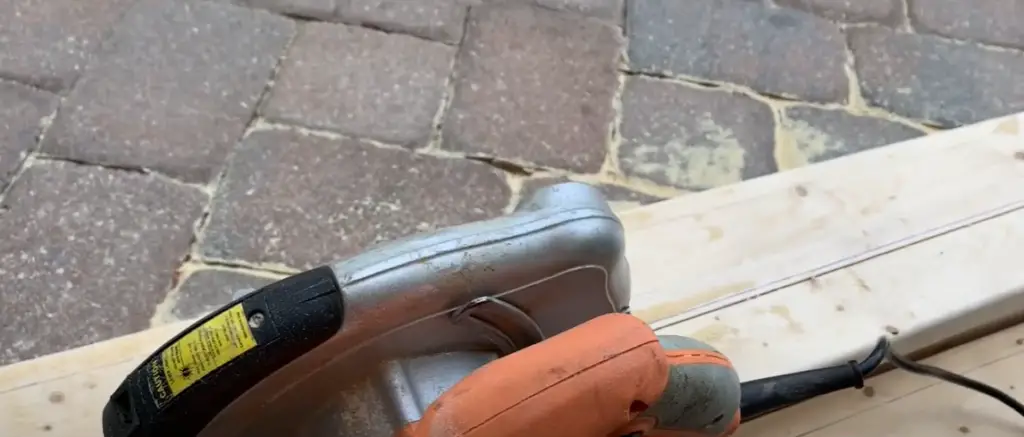
Safety Tips for Using Circular Saws
Safety should always be a top priority when using a circular saw, regardless of experience level. Here are some important tips to keep in mind when using one:
- Wear protective gear: Safety glasses, gloves, and dust masks are essential when working with power tools like circular saws. Not only do these items protect your eyes from flying debris, but they also minimize the risk of skin irritation caused by sawdust.
- Read the instructions: Before you start, make sure to read the user manual and familiarize yourself with the tool. This will give you a better understanding on how to use it correctly, as well as help you identify any possible hazards associated with your saw. Pay close attention to all safety precautions listed in the instruction manual and adhere to them while using your circular saw.
- Use the correct blade: Blades come in various sizes and materials, so make sure that you choose a blade that is suitable for the material you are working with. Dull blades can cause splintering or tear out, so check your blade frequently to ensure it is sharpened properly before use.
- Stay focused: When using a circular saw, it is important to remain alert and focused at all times. Make sure you clear away any foreign objects that may get in your way and maintain a safe distance from the blade while operating the saw. Never attempt to make adjustments without first turning off the tool, and make sure to unplug it after each use.
By following these simple safety tips, you can help ensure that you use your circular saw safely and get the most out of your tool [2].
DIY Projects with Circular Saws
Circular saws are great tools for tackling a range of DIY projects, from furniture construction to home improvement tasks. From straight-line cuts to beveled edges, these versatile saws can easily be adjusted to make even the most intricate cuts. Here are some of the projects you can try with your circular saw:
- Furniture Making: With their ability to make precise straight cuts and beveled edges, circular saws are great tools for making furniture and other woodworking projects. When used correctly, these saws provide the accuracy needed to build furniture pieces that will last for years to come.
- Deck Building: If you’re looking to build a new deck, look no further than the circular saw. With its ability to make straight cuts in various materials, such as pressure-treated lumber and plywood, these saws are great for constructing decks of all sizes and shapes.
- Home Improvement Projects: From making window frames to cutting drywall, circular saws make home improvement tasks easier and faster. With their adjustable depth settings and powerful blades, these saws are perfect for a range of projects, big or small.
- Wall Framing: Circular saws make framing walls quick and easy. Whether you’re constructing a new wall or simply need to replace some existing frames, these saws can quickly make accurate cuts in studs and other materials.
With their versatility and affordability, it’s no wonder that circular saws are a popular choice among DIYers. Whether you’re looking for an efficient tool to help with your next project or just want to add another powerful tool to your collection, these saws are sure to be a great addition.
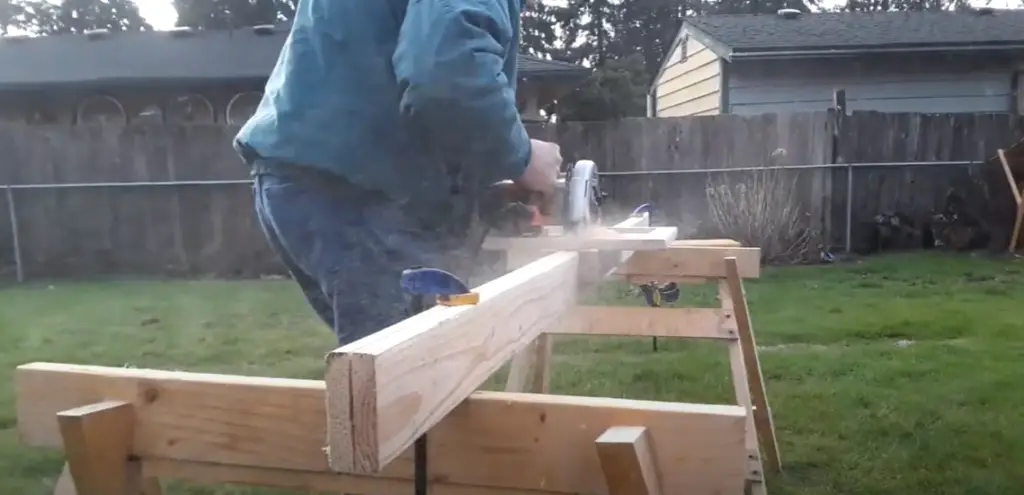
How to Cut 2 x 4 with Circular Saw
Step One: Setup the Board You Want to Work on
If you plan to cut a 2 x 4, the first thing you need to do is carefully set up your board. To do this, take your measuring tape and precisely measure the length of the board. Then, take a sharp pencil and make clear and accurate marks on both sides of the board, ensuring that they are even and aligned perfectly. By having uniform and well-placed marks, you can confidently proceed with your cut, knowing that your board will be precisely and accurately trimmed.
Step Two: Measure and Mark the Cut Using a Speed Square
Once you have your board set up, take a speed square and carefully measure the precise distance of the marks you made in the first step. Using the speed square as a reliable guide, confidently draw a perfectly straight line across the entire length of the board – this is where you will skillfully make your precise cut. Make sure to also mark the exact depth of the cut with utmost precision and accuracy, ensuring that you can effortlessly and accurately adjust your saw accordingly to achieve the desired outcome.
Step Three: Set the Blade Depth
Before you start cutting, it is crucial to properly adjust the blade depth of your circular saw. Take a moment to locate the knob or lever on the side of your saw that allows you to set the depth. It’s important to ensure that the blade is positioned just slightly above the thickness of the board you are working with. This careful adjustment will guarantee a clean and precise cut, minimizing the risk of damaging or splintering the wood and resulting in a professional-looking finish.
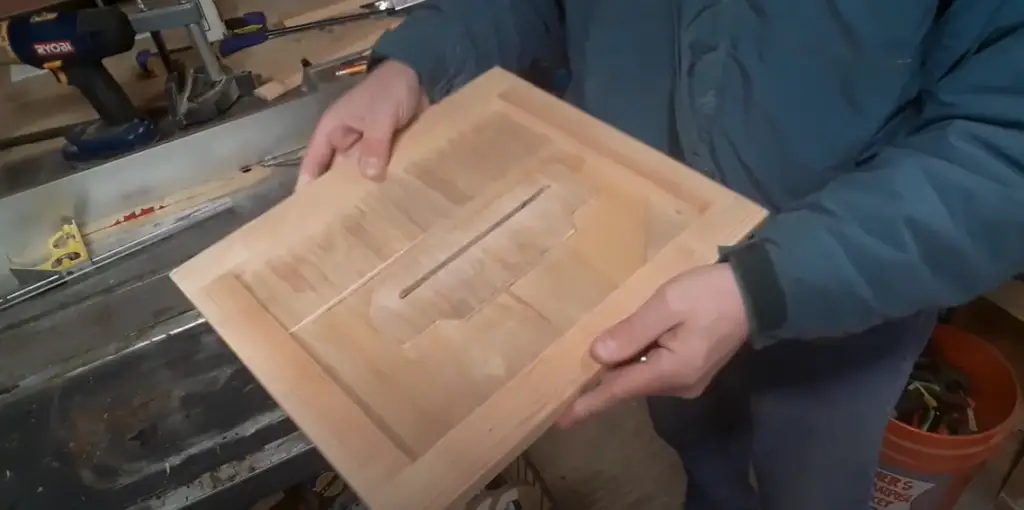
Step Four: Remove the Blade Guard
Once you have carefully and precisely adjusted the blade depth to the desired setting, it is crucial to take the next step in ensuring your safety. Remove the blade guard from your saw, as this important safety measure will effectively shield you from any potential flying debris or pieces of wood that could inadvertently come into contact with your skin. By doing so, you not only prioritize your well-being but also guarantee optimal cutting accuracy and speed, as a clear and unobstructed view of the blade allows for more precise and efficient cuts. Remember, paying attention to these important details will help you achieve the best results while maintaining a safe working environment.
Step Five: Start the Saw
Now that all safety precautions have been taken and your saw is set up correctly, you can finally start cutting the board. Gently place the circular saw blade against the marked line of your board and switch on the power. Start by applying light pressure to guide the blade through the wood – this will ensure a smooth, clean cut while also minimizing kickback. As you near the end of your cut, reduce the pressure on the saw and carefully finish the job.
With these five steps, cutting a 2 x 4 with a circular saw is quick and easy. With consistent practice and attention to safety details, anyone can achieve professional-looking results that will stand the test of time. So don’t be afraid to give it a try – you may be surprised at how great the end result can be [3]!
What is the Right Blade Setup for Cutting 2 x 4 With Circular Saw?
Blade Length and Teeth
When it comes to setting up your saw for the job, there are certain blade lengths and tooth configurations that work best for cutting 2 x 4s. For most projects, a 7-1/4 inch blade with 24 teeth is ideal – this size is perfect for making clean cuts without having to worry about splintering or warping the wood. Additionally, you should consider using a blade with toothed edges – this will minimize the amount of friction between the saw and wood, allowing for smoother, more efficient cuts.
RPMs and Feed Rate
In addition to choosing the right length and type of blade for your project, make sure that you also adjust your saw’s RPMs (revolutions per minute) and feed rate accordingly. Generally speaking, the blade should be set to spin at 7,000 RPM for optimal cutting speed and efficiency. As for feed rate, slow is always better – applying too much pressure when pushing your saw can result in inaccuracy and even injury. Aim for a feed rate of approximately 10 feet per minute for best results.
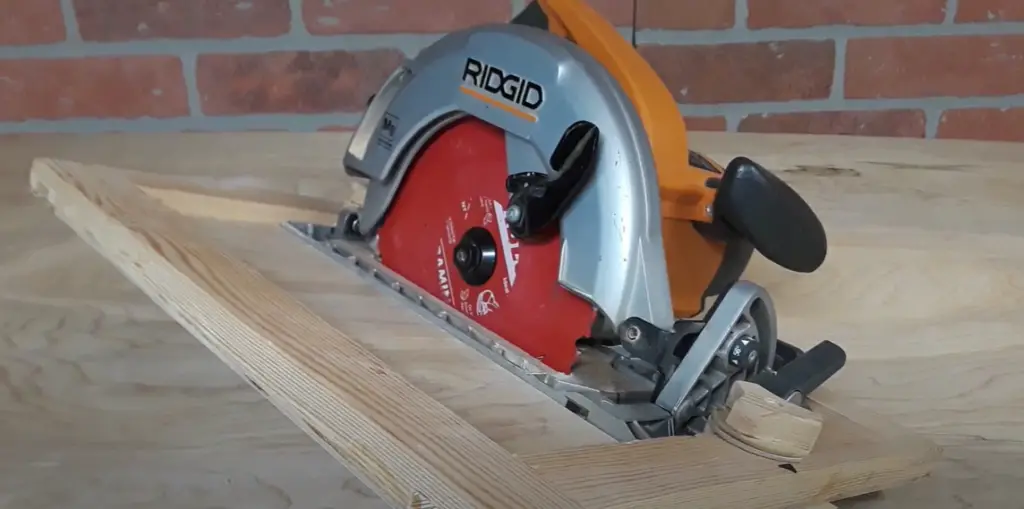
Blade Material
It is important to consider the material of your saw blade when cutting 2 x 4s. High-speed steel blades are a popular and reliable choice for most DIY woodworking projects, as they offer optimal durability and strength. However, if you plan on making particularly deep or intricate cuts, a carbon steel blade may be more suitable – these blades are also known for their superior sharpness and quick edge retention. No matter which material you choose, make sure that your blade is in good condition before commencing with the job – dull or damaged blades are more prone to kickback and can lead to dangerous accidents.
Blade Stiffness
Lastly, take a moment to evaluate the stiffness of your saw blade. Blades with more flexibility are better suited for making curved or angled cuts, as they will not bind up when cutting through wood at an angle. On the other hand, stiffer blades offer greater stability and control while making straight cuts and can withstand high amounts of torque without deforming – perfect for those DIY projects that require precise, clean cuts.
Features to Consider When Buying a Circular Saw Blade
Type of Cut
The type of cut you need to make will depend on various factors that determine the ideal saw blade for the task. If you’re planning to rip a straight line, a crosscutting saw blade would be the most suitable choice. These blades are designed with deeper gullets between the teeth, which allows for more effective chip removal during the cutting process. On the other hand, a combination blade can be used for both ripping and crosscutting, but it may not provide the same level of precision and quality as a specialized blade. It’s important to consider these details when selecting the right saw blade for your specific cutting needs.
Materials
When selecting a saw blade, it is crucial to carefully consider the type of material you are cutting. Different materials call for specific types of blades with precise teeth configurations and tooth angles to ensure optimal performance. For instance, when it comes to cutting metal, it becomes even more important to choose a blade specifically designed for this purpose. Metal-cutting blades are crafted from special metals and carbide grades that possess exceptional durability, allowing them to withstand the higher temperatures generated during metal-cutting applications. By selecting the appropriate blade, you can achieve superior cutting results and prolong the lifespan of both the blade and the cutting tool.
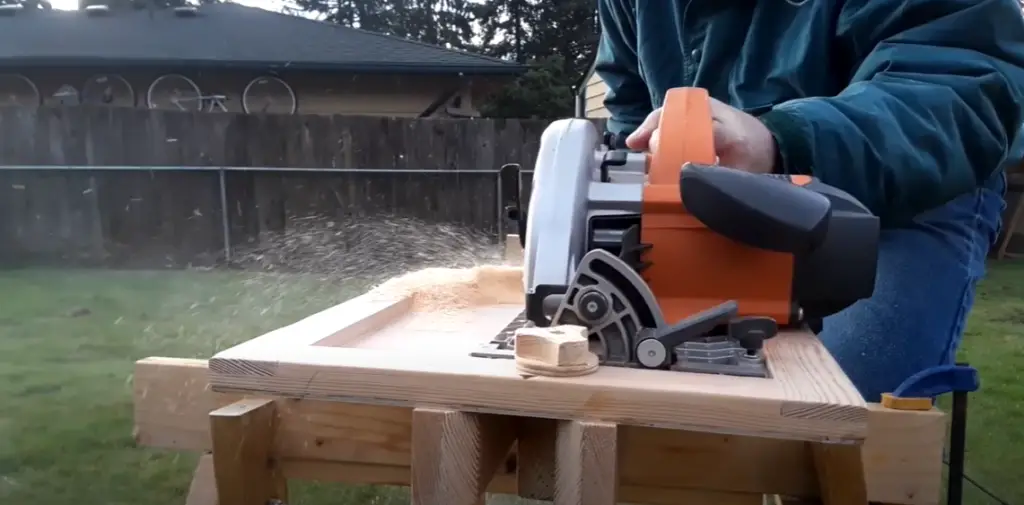
Blade Size
When selecting the size of the saw blade, it’s important to consider what you’ll be cutting. Larger blades, typically, offer increased stability and improved handling when tackling thicker materials. On the other hand, smaller blades are better suited for thinner materials and more delicate cuts. However, before making your choice, ensure that your circular saw is compatible with the blade size you have in mind. Taking these factors into account will help you achieve optimal results in your cutting tasks.
Type of Material to Cut
The type of material you plan to cut will also have an impact on the saw blade you select. For instance, cutting softwood requires a different saw blade than cutting hardwood. This is because the teeth on softwood blades are more closely spaced and designed for this specific purpose. Hardwood blades, on the other hand, feature larger spacing between their teeth, making them better suited for harder materials. It’s important to know the type of material you will be cutting to choose the most suitable saw blade for your project.
Number of Teeth
The number of teeth on a saw blade can also play an important role in determining its performance. Generally speaking, blades with more teeth create smoother and finer finishes, while those with fewer teeth are better for ripping cuts. You should also keep in mind that each type of cut requires a specific combination of teeth and angles, so it’s important to carefully consider all these factors before selecting the right saw blade for the job.
Expansion Slot
Another important factor to consider is the expansion slot of the saw blade. This helps reduce heat buildup during cutting, which can cause warping and other damage to your tools and material. An expandable slot works by allowing a thin layer of air between the blade and the arbor, thus helping dissipate heat from the cutting process quickly. A properly designed saw blade with an expansion slot can improve the performance and extend the life of both the blade and the cutting tool.
How to maintain a Circular Saw?
Circular saws are essential tools for any woodworker, and it’s important to make sure they remain in good condition. Here are some tips for keeping your saw running smoothly:
- Keep blades sharp: This is the most important step to ensure that your cuts are accurate and clean. Sharpening a blade regularly will extend its life and save you time and money in the long run.
- Clean the saw and its components: Regularly brush off the sawdust from all parts of the tool, including blades, guard plates, bearings, and motor housing. Make sure that any lubrication points are lubricated with mineral oil or grease for optimal performance.
- Check alignment: It’s important to check that the saw is parallel to the cut line for accurate cutting. Use a carpenter’s square to ensure that your cuts are straight and even.
- Replace worn parts: If parts of the saw become damaged or worn out, replace them as soon as possible for optimal performance and safe operation.
- Store correctly: Keep your circular saw in a dry place when not in use to protect it from rust and corrosion.
- Read the manual: Familiarize yourself with your saw’s manual for proper maintenance instructions for specific parts and components of the tool.
These steps can help keep your circular saw running safely and smoothly, ensuring that you get perfect cuts every time! With proper upkeep, your saw should last you for years to come. Keep in mind that when you’re working with a circular saw, safety should always be top of mind – use the right protective gear and follow all instructions carefully. Happy cutting!
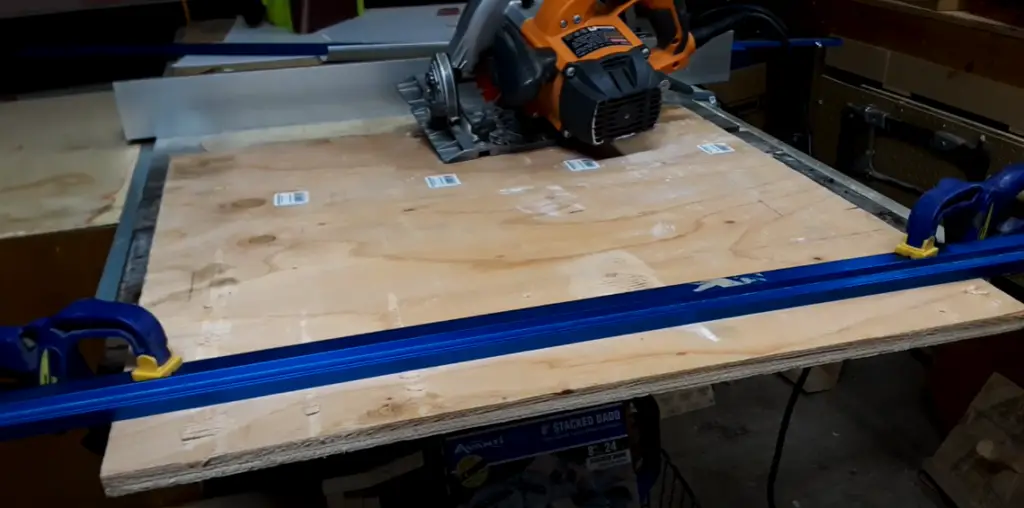
FAQ
How big of a circular saw do I need to cut a 2×4?
When it comes to cutting a 2×4, you will need at least a 7-and-a-half-inch saw blade. This is the minimum size for the job, but if you can get away with a larger blade then it’s recommended that you use one. A larger blade will be able to make smoother cuts as well as cut through thicker pieces of wood with more ease. Alternatively, you can use a jigsaw with a fine-toothed blade for a more precise cut. In general, it’s best to invest in the highest quality saw that fits your budget as this will give you the most optimal cutting results.
What is the difference between a circular saw and a miter saw?
A circular saw is a handheld power tool used for general cutting needs, while a miter saw is designed for making straight cross-cuts in wood. The main difference between the two is that a circular saw can make angled cuts and has more general uses, while a miter saw is more precise and only makes straight cuts. Circular saws are also much easier to transport and store due to their smaller size. If you’re doing basic cutting tasks such as trimming, ripping sheet goods, or making simple cuts in framing lumber, then a circular saw would be the preferred choice. However, if you’re looking for detailed angled cuts or have specific dimensional needs then a miter saw might be the better option.
Useful Video: How to Rip a 2×4 with a Circular Saw
Conclusion Paragraph
So, to cut a 2×4 with a circular saw, all you need is your saw of choice, a straight edge to guide the cut and protective eyewear. It’s best to practice on scrap wood before taking your cuts. When using a circular saw, start with the saw blade slightly above the wood while you’re still holding it in place. Then, make sure to keep your hands firmly gripping the board until it is cut through. Be sure to wear eye protection and take your time to make accurate cuts with a circular saw for DIY projects.
References:
- https://www.doallsaws.com/news-offers/top-11-benefits-of-circular-saw-blades
- https://www.ccohs.ca/oshanswers/safety_haz/power_tools/saw_circ.html
- https://sawshub.com/how-to-cut-a-2×4-circular-saw/















Leave a Reply